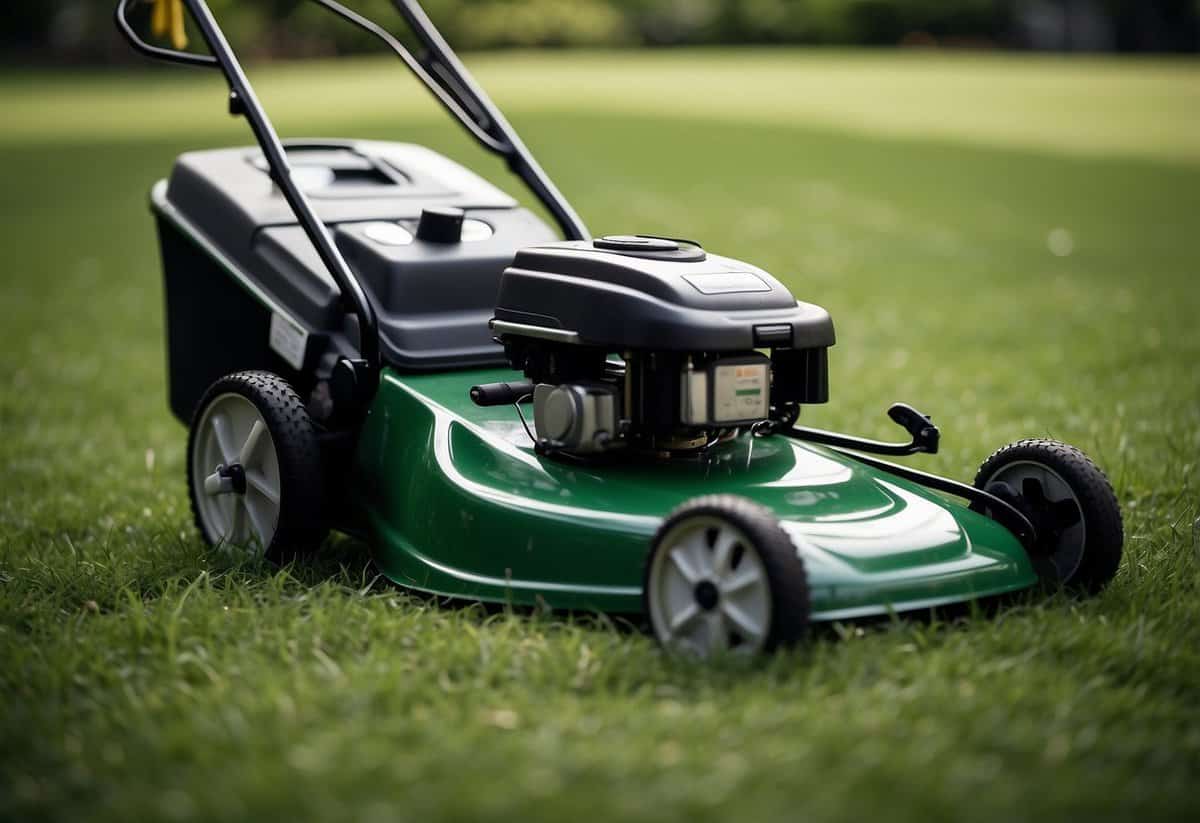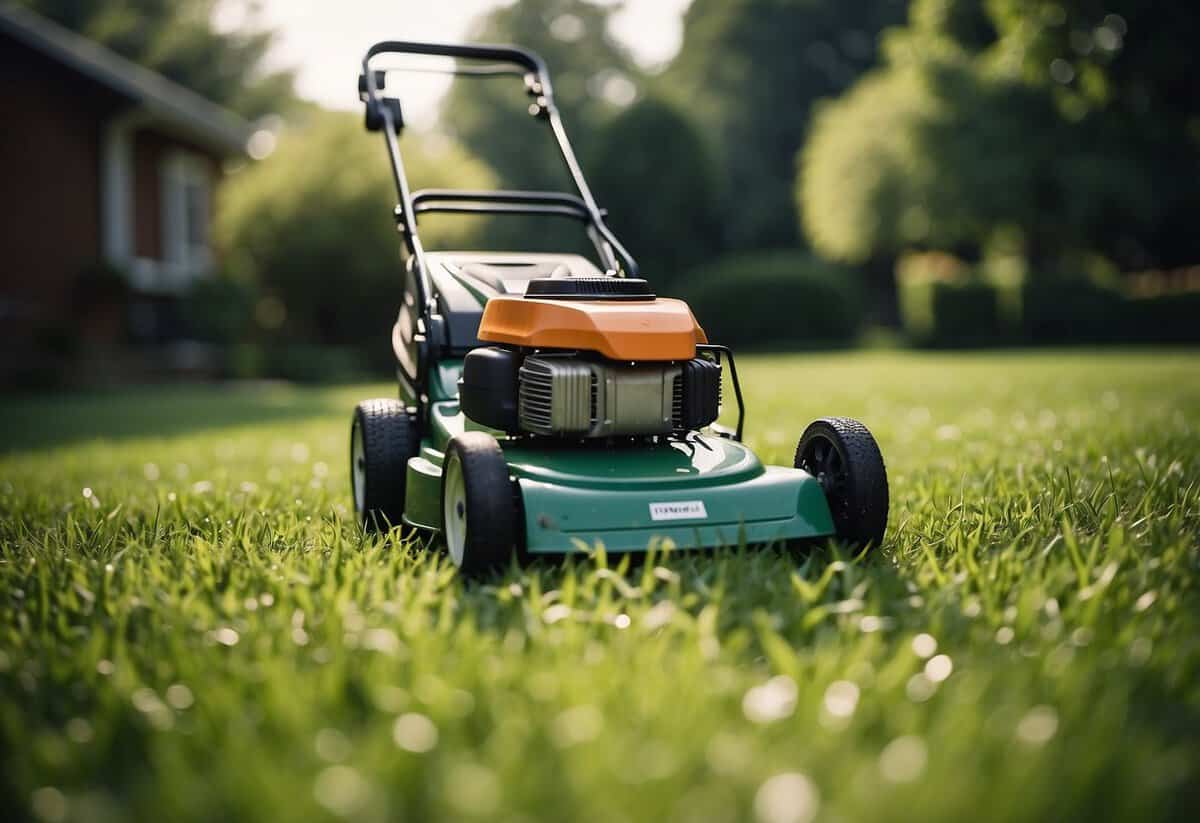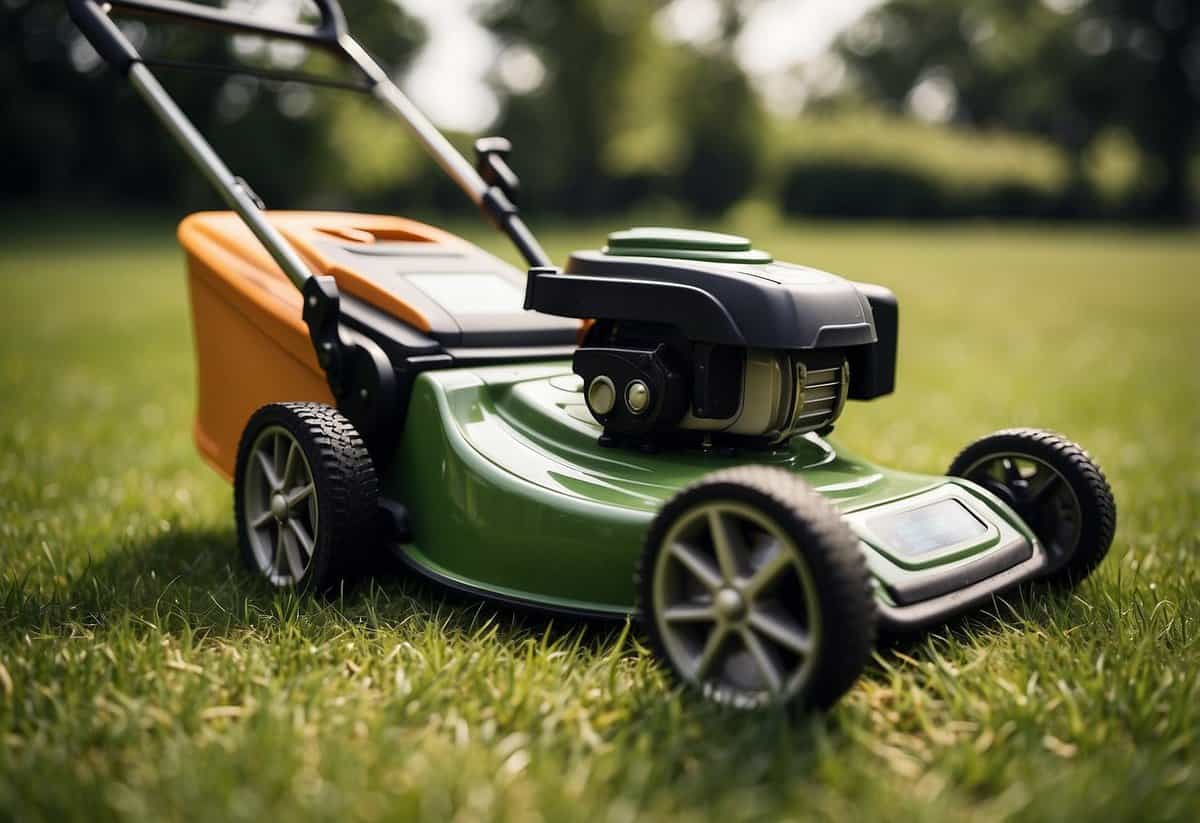Does Mowing the Lawn Burn Calories? Discover the Surprising Health Benefits
Are you looking to shed some extra pounds while tackling your weekend chores? You might be pleased to know that mowing the lawn can actually help you burn calories. Mowing the lawn is a form of physical activity that engages various muscle groups and can burn a significant number of calories, depending on factors like your weight and the type of mower you use.

For example, pushing a manual mower requires more effort and can burn between 192.5 to 244 calories in just 30 minutes for someone weighing around 155 to 185 pounds. Even using a powered mower isn’t without its benefits, as it still requires walking and some physical exertion.
Lawn care tasks become productive workouts, transforming your yard maintenance into an exercise routine. Eager to learn more about the calories you can burn and how to maximize this activity? Read on to discover the benefits of this unassuming activity and tips for making the most of it.
Basics of Burning Calories

Burning calories is an essential part of maintaining a healthy lifestyle. The amount of calories you burn depends on factors like your weight and level of physical activity.
Understanding Calories and Energy Expenditure
Calories measure the energy you get from food and use during physical activities. Your body needs a certain number of calories just to perform basic functions like breathing and maintaining body temperature. This is called your Basal Metabolic Rate (BMR).
When you engage in physical activities, you burn additional calories. Activities like walking, running, or mowing the lawn increase your energy expenditure. The more intense the activity, the more calories you burn.
Larger body weight usually means higher calorie burn since your body requires more energy to perform tasks. For example, a person weighing 185 pounds will burn more calories mowing the lawn compared to a 155-pound person.
The Role of Physical Activity in Caloric Burn
Physical activity boosts your overall calorie burn. Even moderate activities like mowing the lawn can make a significant difference. The type of activity and the intensity level impact how many calories you burn. Using a manual lawn mower burns more calories compared to using an electric one because it requires more physical effort.
Regular physical activity helps you maintain a healthy weight by balancing the calories you consume with the calories you burn. Incorporating activities that increase your heart rate, like mowing the lawn, can contribute to better cardiovascular health and higher energy levels. Being active not only helps you burn calories but also improves your overall well-being.
Mowing Dynamics and Calorie Burn

When mowing the lawn, the type of mower you use, your technique, and the terrain all play a big role in how many calories you can burn. Each factor can increase or decrease the intensity of this common yard chore.
Different Types of Lawn Mowers
There are various types of lawn mowers, each affecting your calorie burn differently. Using a manual push mower typically burns the most calories because you need to apply more force. A person weighing 155 pounds burns about 205 calories per half-hour using a manual mower.
A push mower with a motor requires less effort compared to a manual mower, but it still gives a good workout. A 155-pound person might burn around 167 calories in 30 minutes.
A riding lawn mower burns fewer calories since it involves less physical effort. For instance, a 180-pound person will burn approximately 216 calories per hour of mowing with a riding mower.
Effect of Mowing Techniques on Calorie Burn
The way you mow also impacts the calories you burn. When using a self-propelled mower, pushing the machine faster will increase calorie expenditure. Maintaining a brisk pace, bending slightly at the waist, and using longer strides can help maximize your workout.
Frequent starting, stopping, and turning with a power mower requires additional effort, which can add to the calorie burn. If you vary your mowing pattern and include more turns or obstacles, you can make your mowing session more intense.
Terrain and Mowing Difficulty
The terrain of your lawn greatly affects how hard you work and, thus, how many calories you burn. Mowing on a flat surface requires less effort than mowing on a slope or uneven ground. If your lawn has hills or rough patches, it can increase resistance and calorie burn.
Tackling a hilly or bumpy area with a hand mower will make your muscles work harder. The more difficult the terrain, the more energy you expend. Adding these challenges can make your lawn care routine more of a workout, helping you burn even more calories.
By considering the type of mower, your mowing technique, and the terrain, you can tailor your yard work to be a more effective form of exercise.
Quantifying Calorie Loss

When mowing the lawn, various factors influence the number of calories you burn. Using a calorie calculator and understanding MET values can provide a clearer picture of your energy expenditure.
How to Use a Calorie Calculator
A calorie calculator can help you figure out how many calories you burn while mowing the lawn. You’ll need to input your weight and the time you spend mowing.
For example, if you weigh 150 pounds and mow for an hour, the calculator will use your weight and duration to estimate calorie burn. The formula often used is:
Calories Burned = (Time in minutes / 60) * MET value * (Weight in kg)
Many online calculators, such as those from Captain Calculator and Calculator Academy, make this easy. Just enter your details, and they’ll do the rest.
MET Values and Their Significance in Calorie Calculation
MET values (Metabolic Equivalent of Task) are used to estimate the amount of energy you expend. Each activity has a different MET value, representing the energy cost of that activity compared to resting.
For mowing the lawn, different MET values exist depending on the intensity. For example, pushing a manual mower might have a MET value of around 5.5, while using a riding mower might be significantly lower.
To calculate the calories burned:
- Convert your weight from pounds to kilograms (1 lb = 0.45 kg).
- Multiply the MET value by your weight in kg.
- Multiply that result by the time spent (in hours).
This helps you understand how different activities and intensities affect your calorie burn.
Mowing as a Form of Exercise

Mowing your lawn provides more than just a neat yard. It can be a surprising way to boost your physical activity and engage various muscle groups.
Comparing Lawn Mowing to Other Physical Activities
Mowing the lawn can burn a significant amount of calories. A 155-pound person can burn about 205 calories per half-hour of mowing with a manual mower. In comparison, moderate effort activities like raking or gardening can also help you burn calories, but lawn mowing offers the added benefit of continuous movement.
Unlike some forms of exercise, mowing combines yard work with cardio. This combination makes it similar to activities like brisk walking or cycling at a moderate pace. You move steadily, which helps in managing weight and improving heart health.
Cardiovascular Fitness and Muscular Engagement During Mowing
Pushing a lawn mower requires varying levels of effort. Even with a cordless electric mower, you engage several muscle groups. Your quadriceps, calves, and shoulders, for example, work hard as you navigate uneven terrain.
The cardiovascular benefits of mowing are significant. This outdoor activity can enhance your cardiovascular fitness by keeping your heart rate elevated. Consistently doing this activity can lead to improved cardiovascular health.
Beyond physical benefits, mowing can be a great way to reduce stress. The rhythmic motion and time spent outdoors can provide mental clarity. Lawn mowing integrates exercise with productive gardening, making it a beneficial and multifunctional activity.
Health and Safety Tips

Before starting any lawn mowing activity, it’s essential to do a warm-up. Stretch your muscles to avoid injuries such as back pain.
Always wear sunscreen to protect your skin from UV rays and reduce the risk of skin cancer. Use gardening accessories like knee pads or foam pads to protect your joints, especially if you’re working on hilly terrain.
Choose the right type of mower. A manual push mower burns the most calories but requires more effort. If you prefer less physical strain, opt for a cordless electric mower.
Stay hydrated and take frequent breaks, especially in hot temperature. Mow during cooler parts of the day to avoid heat stress.
Use proper techniques to avoid injuries. For instance, when lifting heavy objects like mulch or trimming shrubs, bend your knees to protect your back.
Gardening accessories and equipment should be in good condition. Dull blades on mowers can cause accidents. Make sure your technology is up to date and safe to use.
Maintain a clear lawn area. Remove obstacles such as rocks or branches to prevent accidents. Always be cautious around environmental conditions like uneven ground.
Stay motivated by setting small, achievable goals. Involve your family or make a playlist of your favorite songs.
Lastly, dress appropriately. Wear long sleeves and pants to protect your skin and closed-toed shoes to protect your feet from the mower and other gardening accessories.
By following these tips, you can enjoy mowing the lawn safely and effectively.







